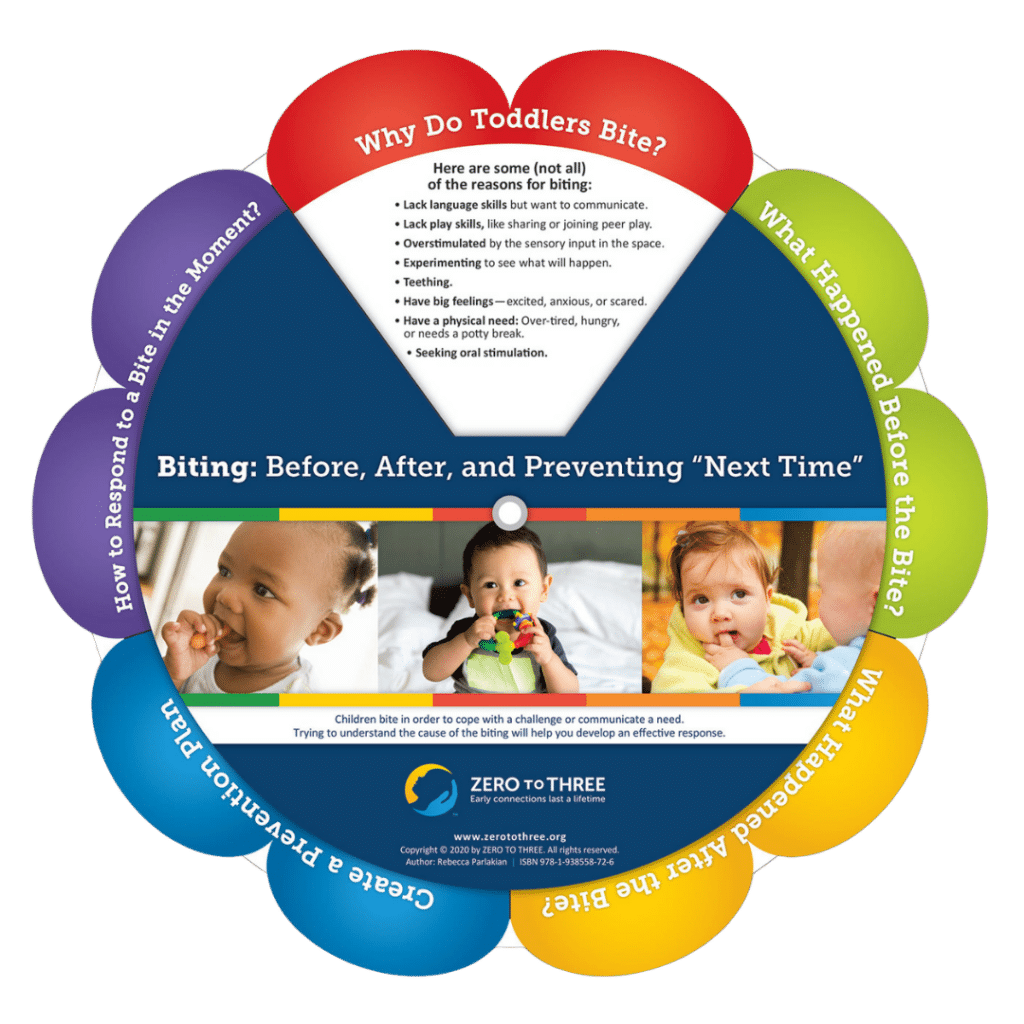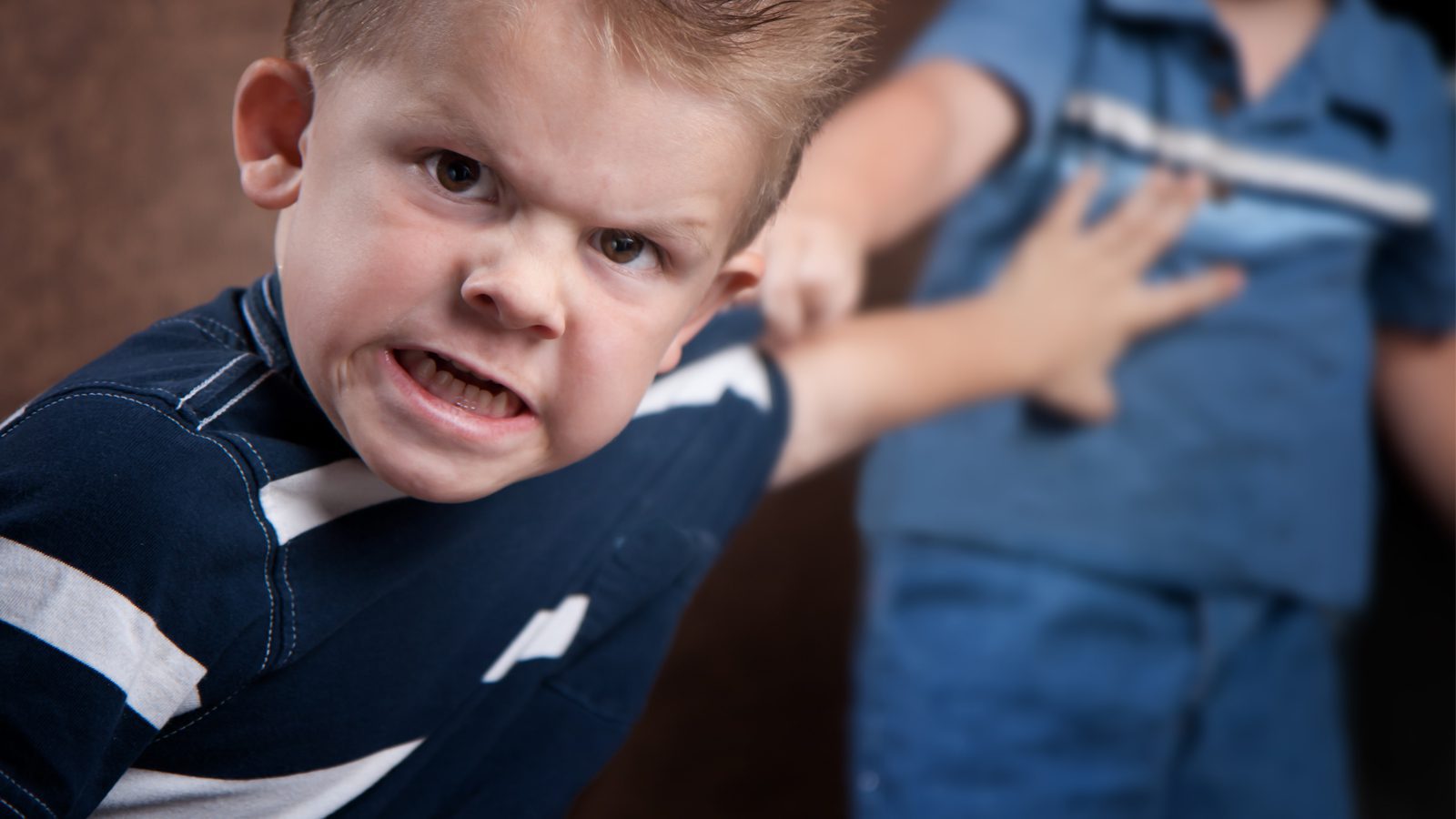Understanding the Why is Key to Prevention
Our bite wheels (in both English and Spanish) help caregivers understand how to respond to the child who bit and the child who was bitten, and learn how to prevent biting in the future.


To set the stage for effectively addressing this challenge, avoid calling or thinking of your child as a “biter” and ask others not to use this term. Labeling children can actually lead to them taking on the identity assigned to them, which can intensify biting behavior rather than eliminate it.
Children bite in order to cope with a challenge or fulfill a need. For example, your child may be biting to express a strong feeling (like frustration), communicate a need for personal space (maybe another child is standing too close) or to satisfy a need for oral stimulation. Trying your best to understand the underlying cause of the biting will help you develop an effective response. This makes it more likely that you will be successful in eliminating the behavior.
Remember, shaming and harsh punishment do not reduce toddler biting.
Toddlers might bite if they:
Understanding the Why is Key to Prevention
Our bite wheels (in both English and Spanish) help caregivers understand how to respond to the child who bit and the child who was bitten, and learn how to prevent biting in the future.

Some titles to recommend include:
Explore tips to support social and emotional development in toddlers.

Remember, learning a new behavior takes time. Your toddler may bite again, so continue watching playtime closely. It also helps to use the same words (No biting. Biting hurts.) as consistently as possible to emphasize the message.
If you think biting is a substitute for not having the language skills to express himself you can:
If your child is easily overwhelmed by lights, sound, and activity, you can:
If your child is experimenting to see what will happen when he bites, you can:
If your child needs more active play, you can:
If your child is over-tired, you can:
If your child is teething, you can:
If your child has a need for oral stimulation:

Help us spread the message that positive parenting matters.
